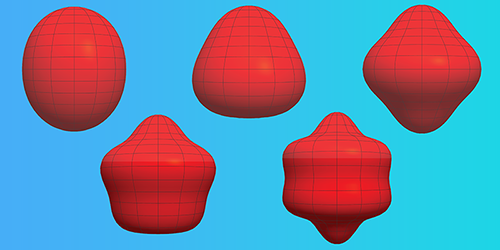Highest-Order Electromagnetic Transition Observed
Much like an atom’s electrons, an atom’s nucleus can exist in ground and excited states. It can also emit photons—typically at gamma-ray wavelengths—as the nucleus transitions between those states. The most easily observed of these transitions, which are classified by their “multipolarity,” are the low-order ones (dipolar and quadrupolar), which can be modeled as the emission of oscillating dipoles or quadrupoles. As the order increases, the transitions become less probable—and their names more intricate. Previously, the fifth-order transition (known as triacontadipole) was the highest-order transition observed. Now Alan John (AJ) Mitchell of the Australian National University and colleagues have provided conclusive evidence for the sixth-order transition (hexacontatetrapole) [1].
Hints of the hexacontatetrapole transition first appeared in experiments in the 1970s on iron-53 (53Fe). Those experiments detected a faint 3041-keV photon emission that could not be ascribed to a lower-order transition. Those studies, however, could not rule out the possibility that the weak signal came from a summing artifact in which multiple low-energy photons simultaneously hit the detector and get recorded as one high-energy photon.
To settle the issue, Mitchell and colleagues carried out high-precision gamma-ray spectroscopy experiments on excited 53Fe isomers produced at a heavy-ion accelerator. Feeding the data into simulations, they showed that summing provided a negligible contribution to the 3041-keV line, establishing the sixth-order nature of the transition. The team also quantified the strength of this transition and improved the characterization of the strengths and energies of the fourth- and fifth-order transitions. Since these high-multipolarity transitions are fundamentally different from low-order ones, Mitchell says that “these data provide a unique way to test nuclear-shell models.”
–Matteo Rini
Matteo Rini is the Editor of Physics Magazine.
References
- T. Palazzo et al., “Direct measurement of hexacontatetrapole, E6 𝛾 decay from 53mFe,” Phys. Rev. Lett. 130, 122503 (2023).




